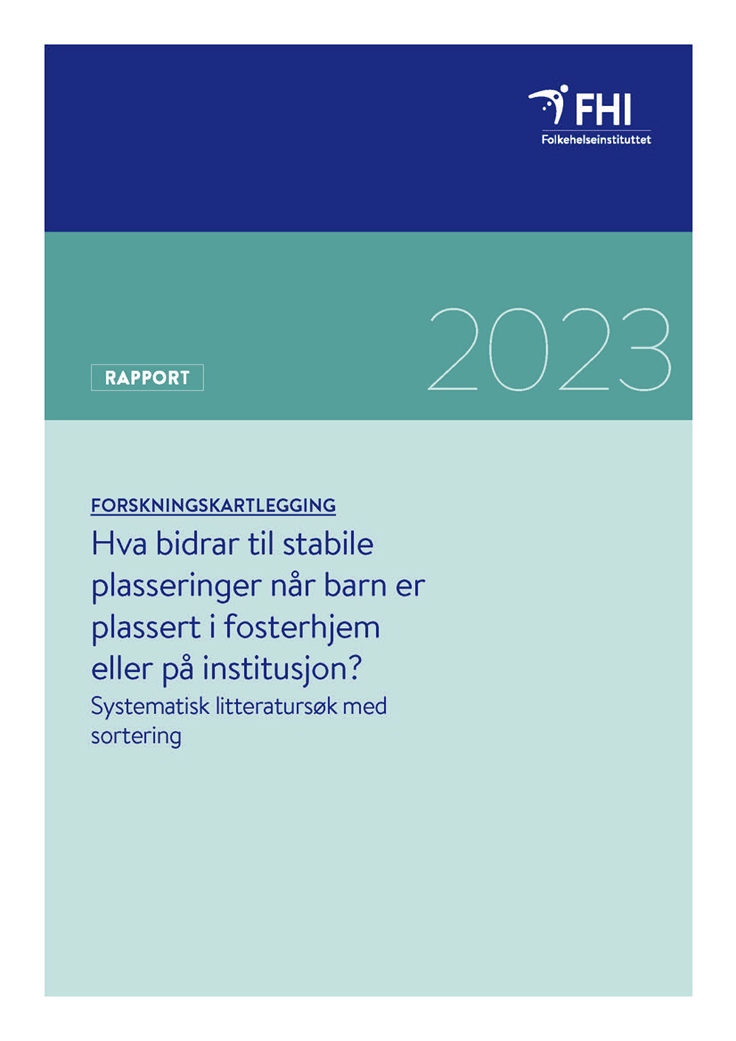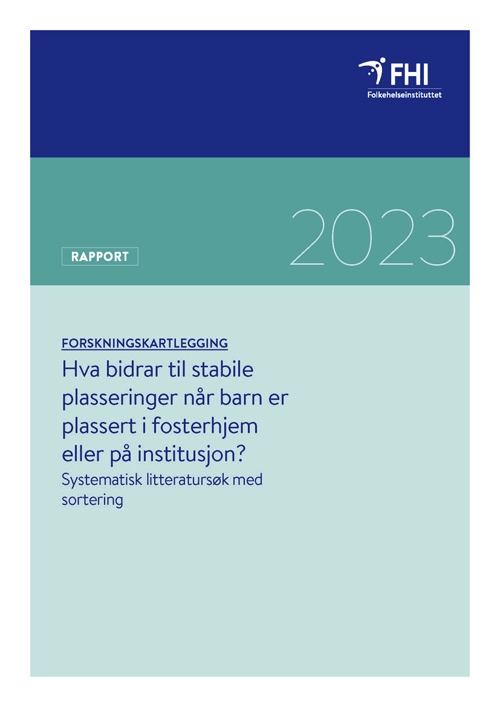What contributes to stable placements when children are placed in foster homes or institutions? Systematic literature search with sorting
Mapping review
|Published
The aim of this review was to describe available research on child/youth factors that influence stability in placements in foster care and institutional care.
Key message
Each year, up to two thousand children in Norway are moved from their home to an institution or foster care. Unstable placement is unfortunate because it, among other things, leads to disruption in the caretaker relationship and increases the children’s risk of problematic behaviour and poorer mental health.
The aim of this review was to describe available research on child/youth factors that influence stability in placements in foster care and institutional care.
Vi conducted a systematic literature search with categorization of identified, relevant studies. It is a type of systematic review about what type of literature exists about a specific question, with includes publications sorted into categories and presented in lists.
We included 25 publications from 2015-2022 that addressed factors in children and young people that may affect stability in placements:
- 5 of the identified studies were literature reviews and 20 were primary studies
- 15 of the primary studies used quantitative design, 4 qualitative and one had an unknown study design
- Most of the studies dealt with foster homes
- Several studies were from the Netherlands, Belgium and Spain, while only one was from Norway and one from Sweden
- The factors that were mentioned most often in the included studies were the child's behaviour, age, placement history and adverse experiences
We present the results both in this report and via the digital visualization tool EPPI-Vis, here: https://eppi.ioe.ac.uk/eppi-vis/login/open?webdbid=360

